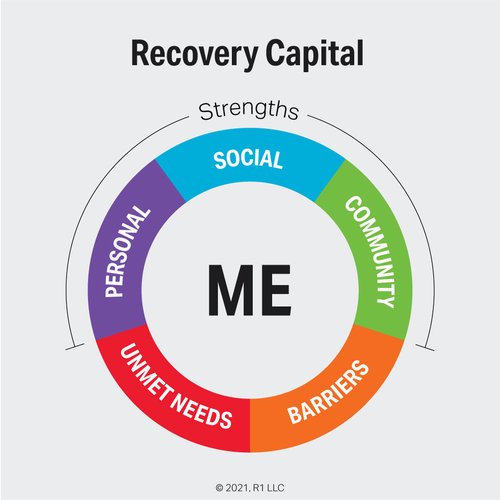According to the originators, William Cloud and Robert Granfield, Recovery Capital refers to “the breadth and depth of internal and external resources that can be drawn upon to initiate and sustain recovery” from substance use disorder. William White’s work heightened the importance of Recovery Capital by highlighting the idea that therapeutic processes in addiction treatment must encompass more than a strictly clinical intervention. Strategies that target family and community recovery capital can elevate long-term recovery outcomes, as well as the quality of life of individuals and families in long-term recovery. The framework of Recovery Capital continues to evolve today highlighting the idea that, according to the Recovery Research Institute (RRI), there are multiple pathways to recovery;
▪ Clinical pathways (recovery processes aided by the services of a healthcare provider, clinician, or other credentialed professional),
▪ Non-clinical pathways (recovery processes that do not involve a trained clinician, but are often community-based and utilize peer support), and
▪ Self-management pathways (recovery processes that involve no formal services, sometimes referred to as “natural recovery”).
Additionally, the Substance Abuse and Mental Health Services Administration (SAMHSA), a branch of the U.S. Department of Health and Human Services, defines Recovery from Mental Disorders and/or Substance Use Disorders as:
Recovery Defined: A process of change through which individuals improve their health and wellness, live a self-directed life, and strive to reach their full potential. Recovery is more than simply abstinence from alcohol and other drugs.
SAMHSA’s Four major dimensions that support a life include:
- Health, defined as overcoming or managing one’s disease(s) or symptoms by making informed, healthy choices that support physical and emotional well-being
- Home, defined as having a safe and stable place to live
- Purpose, defined conduction meaningful daily activities such as a job, school volunteerism, family care taking or creative endeavors. Having the independence, income and resources to participate in society
- Community, having relationships and social networks that provide support, friendship, love, and hope
In essence, Recovery Capital is a roadmap for building and sustaining recovery beyond access to acute treatment interventions. It is a construct to educate, assess, and measure individual’s progress with any entry point to the various pathways of recovery. It can be used as the centerpiece of care planning discussion at the clinical, recovery coach, or peer support levels. Therefore, Recovery Capital can be applied as a best practice assessment tool to track the progress and outcomes of care from any point on the recovery continuum through a multi-year recovery journey toward health, wellness, and a perceived higher quality of life.
Exploring Recovery Capital History and Experts
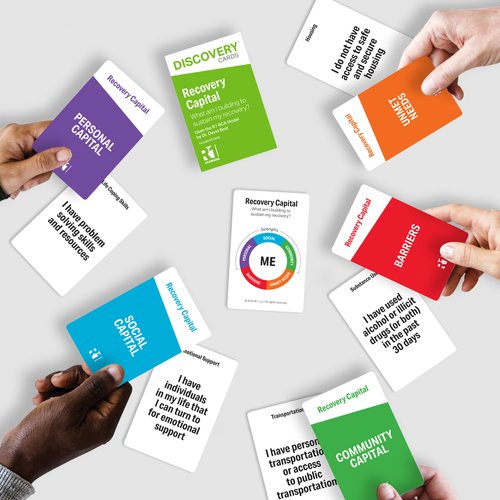
R1 RESOURCE LINKS:
- Strengths Planning for Building Recovery Capital (Best, Counselor Magazine 2018)
- Latest Recovery Capital Research and Findings Video (Dr. David Best with Tom Karl, CCAPP Conference 2020) — Coming soon
- Recovery Capital Pathways (Cano and Best, 2017)
- William White Interviews David Best (Best and White, 2012)
- Recovery Capital, A Primer for Professionals (White and Cloud, 2008)
- Recovery Capital as Prospective Predictor of Sustained Recovery (Laudet and White, 2008)
Defining Recovery Capital
Recovery Capital refers to the internal and external resources necessary to achieve and sustain recovery. The Recovery Capital Model recognizes that a variety of dimensions — personal capital, social capital, community capital, emotional support, commitment to sobriety, and well-being — can support or jeopardize recovery depending on how individuals use their capital. Ongoing assessment of strengths and gaps in each dimension helps build a solid foundation in recovery over time.
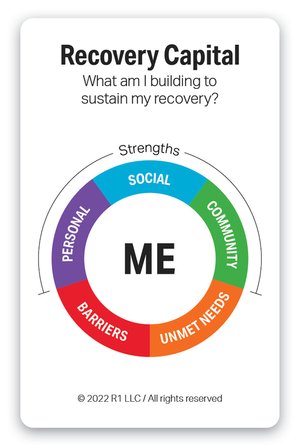
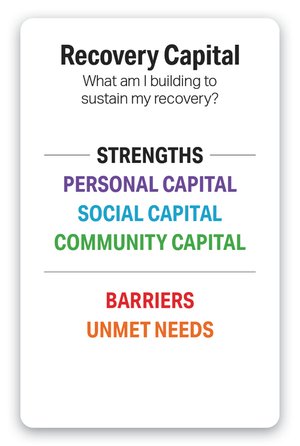
The twenty-five (25) bulleted behaviors below are a subset of the forty-one (57) listed in the R1 Discovery Cards deck and Facilitator Guide. Use the list below to think about your own Recovery Capital or someone you are working with and then answer the Questions to Explore below.
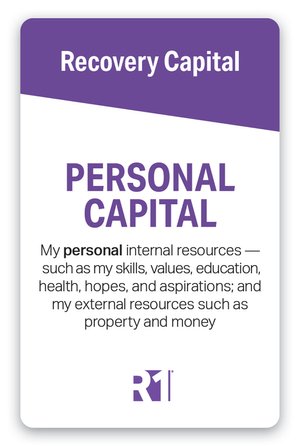
Personal Capital: My personal internal resources — such as my skills, values, education, health, hopes, and aspirations; and my external resources such as property and money. Discovery Cards examples include:
- I am making good progress on my recovery journey
- In general I am happy with my life
- I take full responsibility for my actions
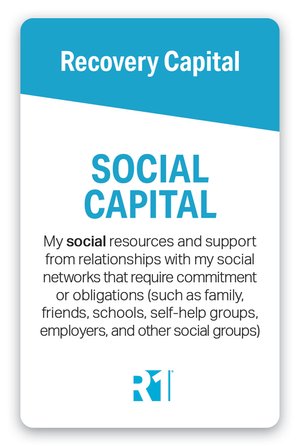
Social Capital: My social resources and support from relationships with my social networks that require commitment or obligations (such as family, friends, schools, self-help groups, employers, and other social groups). Discovery Cards examples include:
- I get a lot of support from friends
- I regard my life as challenging and fulfilling without the need for using drugs or alcohol
- I am proud of the community I live in and feel a part of it
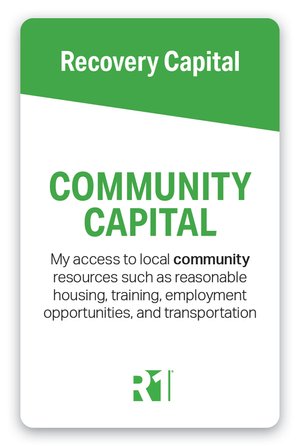
Community Capital: My access to local community resources such as reasonable housing, training, employment opportunities, and transportation. Discovery Cards examples include:
- I attend recovery group meetings on a weekly basis or more frequently
- I attend recovery social events
- I encourage others to attend my (or others) recovery group
Barriers and Unmet Needs

Barriers: The obstacles or barriers that prevent my access to or progress in building recovery strengths — such as ongoing substance use, risk around injecting practices, involvement with crime or the justice system, homelessness or insecure housing, and lack of meaningful activities. Discovery Cards examples include:
- I have been at risk of eviction or had acute housing problems in the last 30 days
- I am not currently working full-time or part-time, in school, or volunteering
- I am in current contact with the criminal justice system through probation, house arrest, or other reasons
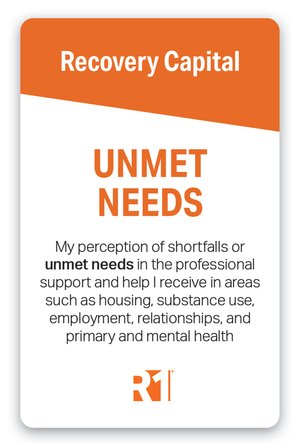
Unmet Needs: My perception of shortfalls or unmet needs in the professional support and help I receive in areas such as housing, substance use, employment, relationships, and primary and mental health. Discovery Cards examples include:
- I have unmet employment support needs
- I have unmet housing support needs
- I have unmet primary health care needs
Questions to Explore
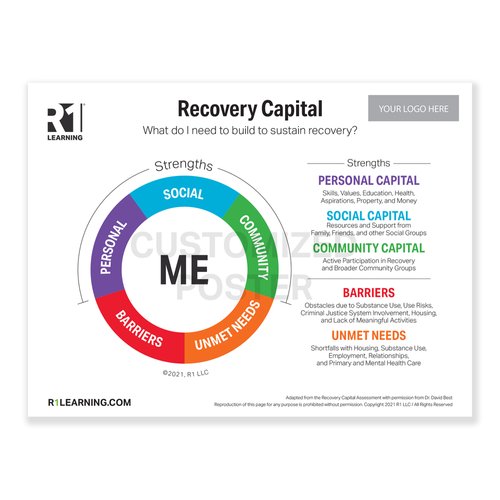
Answer these questions for yourself or someone you are working with.
- Did you find the Recovery Capital Model helpful in thinking about how to build and sustain recovery over time?
- Did the 5 Dimensions help you to better pinpoint specific strengths or gaps? How were these categories helpful?
- Which dimensions were most prominent in your list? Does this make sense?
- As you look back over relevant drinking or using history, what was most helpful from the list? Least helpful?
- Which specific Recovery Capital behaviors do you think will be most important to strengthen?
- What action can you take to help you address these areas and make them strengths in the future?
- Who can you ask for help and support?
Measuring Recovery Capital – The R1 RCA Assessment
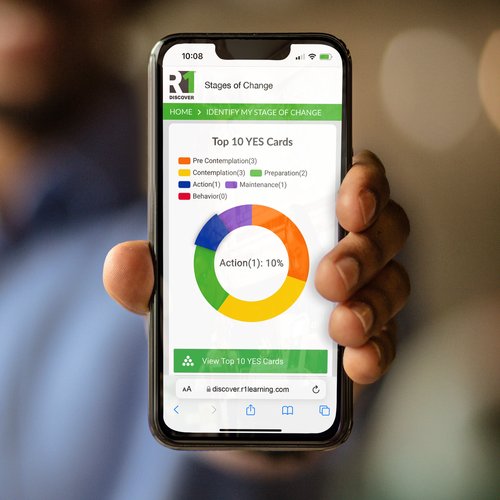
Grounded in the Latest Research and Best Practices
We have chosen to design our Discovery Cards tool based on the latest research and international work of Dr. David Best. This latest version of the Recovery Capital Model leverages the current research and findings that go beyond the original elements defined in the earlier fifty question Assessment of Recovery Capital (ARC) and its condensed version, the Brief Assessment of Recovery Capital (BARC). It’s roots are also in the latest versions of REC-CAP. R1 Learning works with organizations to implement the R1 RCA Assessment as part of their measurement outcomes strategies.
Experiencing Recovery Capital — The Discovery Cards
The R1 Learning System and the Discovery Cards provide an engaging, interactive, and personalized approach for training practitioners and engaging individuals in service. R1 provides training, tools, and resources to support programs with different populations and settings and practitioners at all levels of knowledge, skill, and experience. The Discovery Cards and Group Kits provide a hands-on, concrete, and vocabulary building experience to learn and apply Recovery Capital to real life circumstances and experiences.

References
Groshkova, T., Best, D. & White, W. (2011) Recovery Group Participation Scale (RGPS): factor structure in alcohol and heroin recovery populations. Journal of Groups in Addiction and Recovery, 6, 76-92.
Groshkova, T., Best, D. & White, W. (2012) The Assessment of Recovery Capital: Properties and psychometrics of a measure of addiction recovery strengths. Drug and Alcohol Review, 32(2):187-94
Cano, I., Best, Edwards, M. & Lehman, J. (2017) Recovery capital pathways: Mapping the components of recovery well-being, Drug and Alcohol Dependence, 181, 11-19.
Best, D. (2019) Pathways to dissidence and recovery: The role of the social contagion of hope. Policy Press: Bristol.
Copyright 2021 R1 LLC / All Rights Reserved. Use of this article for any purpose is prohibited without permission.
